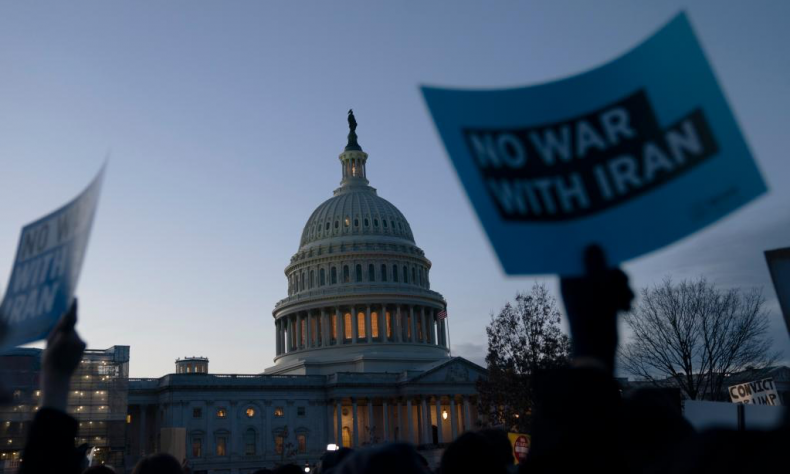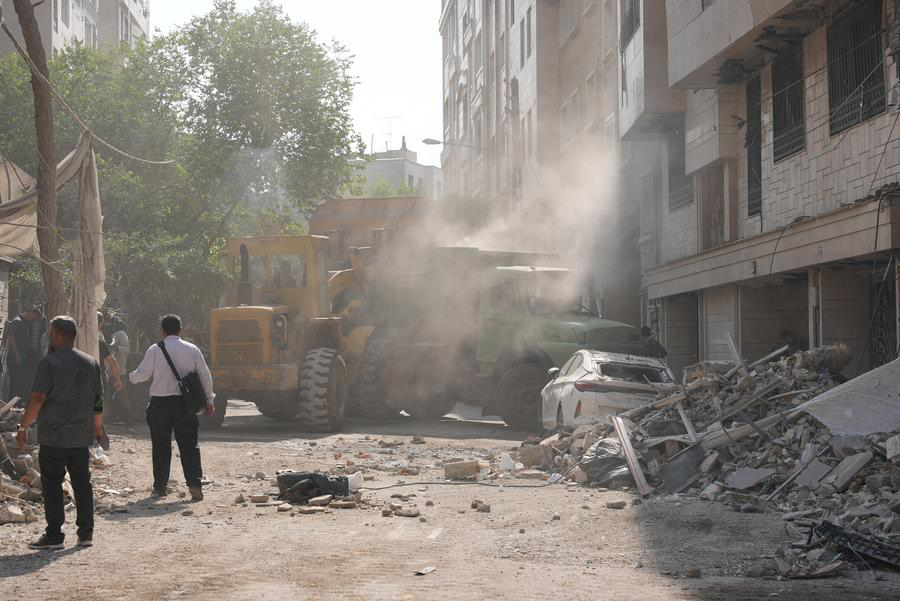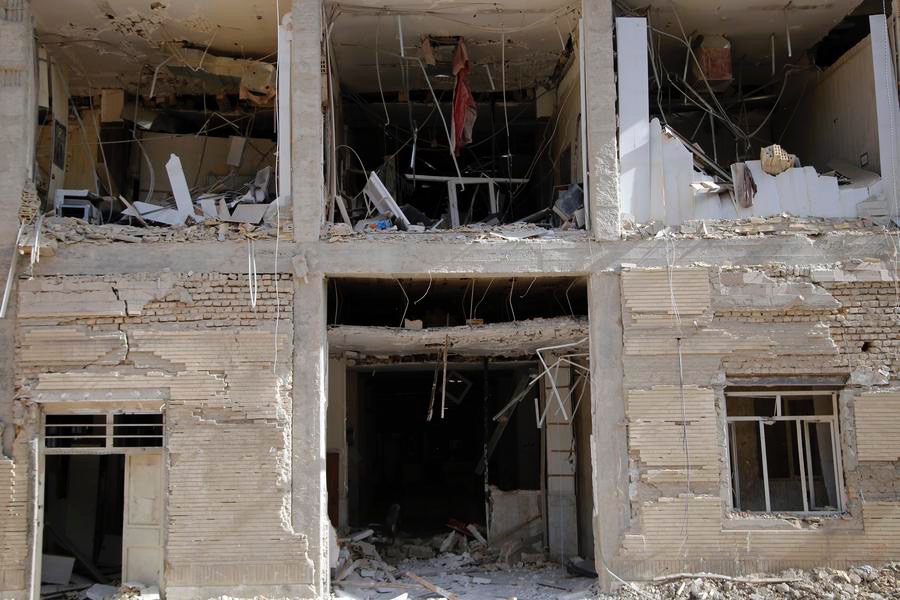War on Iran: The Rule, not Exception, of U.S. Foreign Policy

The U.S. proxy war and war of aggression against Iran is not an isolated incident or an exception regarding U.S. foreign policy, but a destructive example of its rules.
While there appears to be relative calm following the 12-day armed conflict between U.S.-Israeli forces and Iran in June, the conflict itself and the implications it has both for the region and the world represent a continuous threat to global peace, stability and prosperity.
Understanding fully how and why the U.S. and Israeli forces launched this war of aggression against Iran should provide ample warning and lessons to learn regarding other nations the U.S. has designated “adversaries.”
Premeditated
The U.S.-Israeli war was predicated on supposed concerns regarding Iran’s nuclear program and alleged violations of the Non-Proliferation Treaty. The U.S. appeared to pursue “negotiations” with Iran despite possessing no authority under international law to do so, let alone any authority to “act” if negotiations failed.
While the fighting officially began with strikes carried out by Israel on June 13, virtually all military capabilities Israel possesses are the product of U.S. aid, including billions of dollars of weapons and other support specifically tailored for waging war against Iran.

Following the Israeli strikes, U.S. President Donald Trump himself—despite being engaged in negotiations with Iran when they began—declared them “excellent,” while U.S. sources admitted to ABC News that “the U.S. provided ‘exquisite’ intelligence,” used to carry out the attacks.
Israeli media have since claimed that the U.S. participated in the initial strikes through mid-air refueling missions, while other sources reported joint programs to extend the range of U.S.-made F-35 warplanes—a project that would have taken several months or more to complete. Together with direct strikes carried out by the U.S. itself, this all indicates how premeditated the war was and how “negotiations” were used as cover to carry it out.
Decades in the making…
U.S. policy papers as early as 2009 laid out explicit plans to not only use “negotiations” as a pretext to justify U.S. escalation, but also as a means of distancing the U.S. from an Israeli war of aggression the U.S. itself would fully enable and encourage, just as has now taken place in 2025.
A 2009 Brookings Institution paper titled Which Path to Persia? Options for a New American Strategy Toward Iran included a variety of options the U.S. would use to undermine and attempt to overthrow or contain Iran in pursuit of continued U.S. primacy over the Middle East, which in turn would contribute to wider U.S. primacy worldwide.
Despite being written 16 years ago, the policies laid out in the pages of the Brookings paper were executed almost line-by-line starting with the Barack Obama administration and the introduction of the Joint Comprehensive Plan of Action (or “Iran Nuclear Deal”) as the “very good deal” the U.S. would “offer” Iran as a means of depicting Tehran as “ideologically blinkered” before escalating through “diplomatic” and “military” options.
The paper also laid out necessary regional prerequisites before waging war on Iran itself, including isolating Iran from its network of allies—President Bashar al-Assad in Syria, Ansar Allah in Yemen and Hezbollah in Lebanon—subsequently accomplished through a series of wars and proxy wars spanning the Obama, Joe Biden and Trump administrations.
Brookings’ Which Path to Persia? made it especially clear how important it would be to neutralize Syria ahead of war with Iran itself, and among the first steps taken following the fall of the Syrian Government late last year was the Israeli targeting and destruction of Syria’s formidable integrated air defense network. It served until then as a layer of protection for both Syria and its Iranian allies further east from U.S.-backed Israeli airstrikes. Once eliminated, preparations for strikes on Iran using this newly-created air corridor began.
Just the beginning
Despite claims that U.S.-Israeli strikes accomplished their goals in dismantling Iran’s nuclear program, it must be remembered that Washington’s actual objective is regime change in Iran, or Iran’s complete containment. Thus, recent U.S.-Israeli attacks will inevitably be followed up by continued aggression until one or both of these objectives is achieved.

Under Chapter 1: An Offer Iran Shouldn’t Refuse: Persuasion, U.S. policymakers would note: “…any military operation against Iran will likely be very unpopular around the world and require the proper international context…” And that: “The best way to minimize international opprobrium and maximize support (however, grudging or covert) is to strike only when there is a widespread conviction that the Iranians were given but then rejected a superb offer—one so good that only a regime determined to acquire nuclear weapons and acquire them for the wrong reasons would turn it down. Under those circumstances, the U.S. (or Israel) could portray its operations as taken in sorrow, not anger, and at least some in the international community would conclude that the Iranians ‘brought it on themselves’ by refusing a very good deal.”
Thus, “negotiations” were simply used as tools to corner Iran diplomatically, depict Iran as belligerent politically, and create a pretext for U.S. and Israeli strikes militarily.
Under Chapter 4: The Osiraq Option: Airstrikes, the paper would note: “…it would be far more preferable if the U.S. could cite an Iranian provocation as justification for the airstrikes before launching them.” And that: “Of course, it would be very difficult for the U.S. to goad Iran into such a provocation without the rest of the world recognizing this game, which would then undermine it.”
Just as the U.S. had done in 2003 regarding the invasion of Iraq predicated on fabricated claims of “weapons of mass destruction,” the 2009 policy paper sought to create a similar narrative targeting next-door Iran. Because U.S. policymakers sought to create distance between Washington and the U.S. war of aggression it was engineering, an entire chapter was dedicated to using Israel as a means of attacking Iran.
In Chapter 5: Leave it to Bibi: Allowing or Encouraging an Israeli Military Strike, U.S. policymakers claimed: “…the U.S. would encourage—and perhaps even assist—the Israelis in conducting the strikes themselves, in the expectation that both international criticism and Iranian retaliation would be deflected away from the U.S. and onto Israel.”
The premeditated nature of Washington’s war of aggression against Iran and the way throughout which “negotiations” were used to lower the guard of targeted nations as well as portray the U.S. as an arbiter rather than an aggressor, serve as a warning to nations like Russia and China faced with similar U.S. policies of encirclement and containment.
The U.S. proxy war and war of aggression against Iran is not an isolated incident or an exception regarding U.S. foreign policy, but a destructive example of its rules. Capitals across the multipolar world ignore this geopolitical reality and fail to overcome it at their own peril.
The author is a Bangkok-based independent geopolitical analyst and former U.S. Marine.
 Facebook
Facebook
 Twitter
Twitter
 Linkedin
Linkedin
 Google +
Google +










